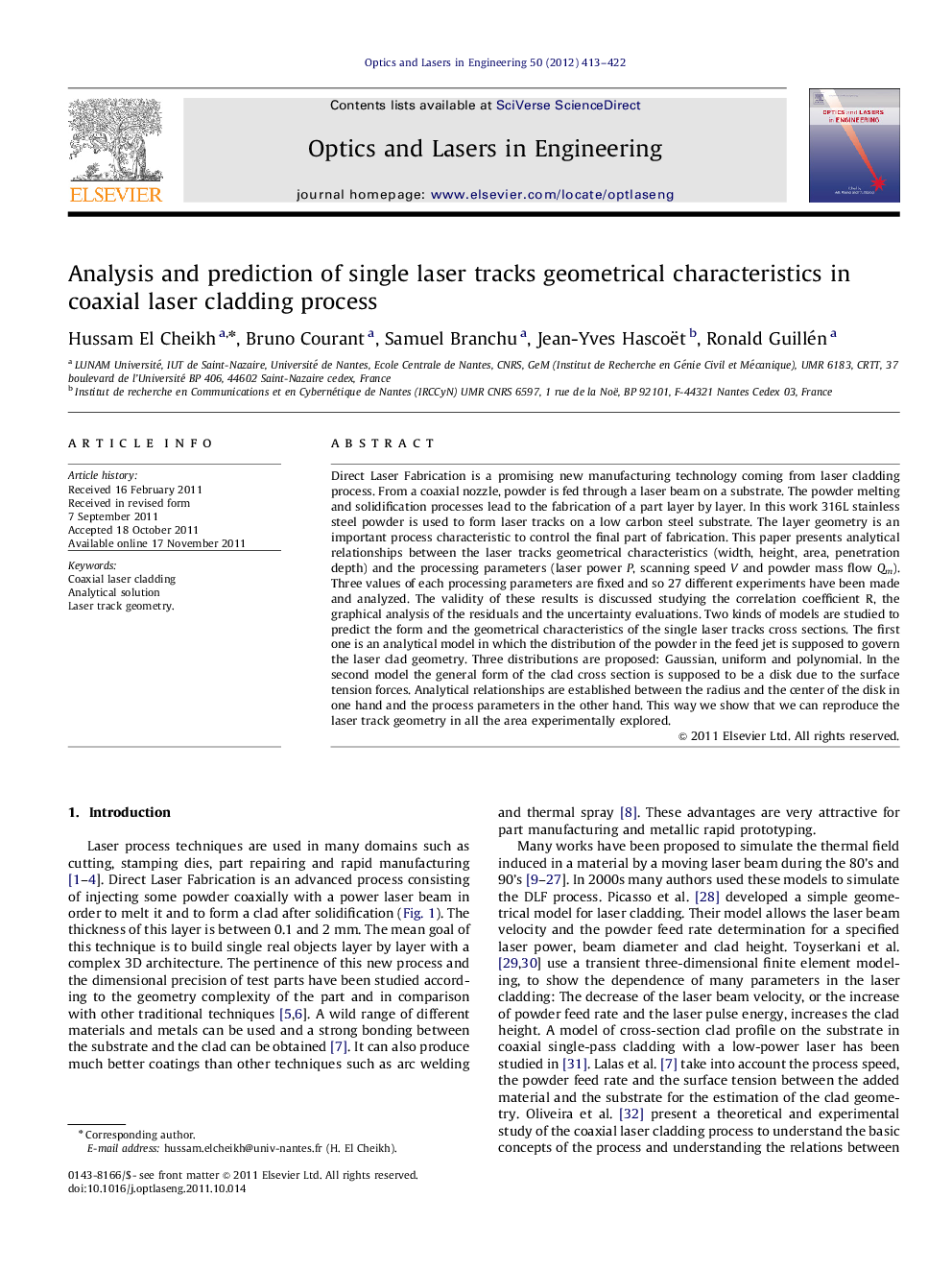| Article ID | Journal | Published Year | Pages | File Type |
|---|---|---|---|---|
| 734937 | Optics and Lasers in Engineering | 2012 | 10 Pages |
Direct Laser Fabrication is a promising new manufacturing technology coming from laser cladding process. From a coaxial nozzle, powder is fed through a laser beam on a substrate. The powder melting and solidification processes lead to the fabrication of a part layer by layer. In this work 316L stainless steel powder is used to form laser tracks on a low carbon steel substrate. The layer geometry is an important process characteristic to control the final part of fabrication. This paper presents analytical relationships between the laser tracks geometrical characteristics (width, height, area, penetration depth) and the processing parameters (laser power P, scanning speed V and powder mass flow Qm). Three values of each processing parameters are fixed and so 27 different experiments have been made and analyzed. The validity of these results is discussed studying the correlation coefficient R, the graphical analysis of the residuals and the uncertainty evaluations. Two kinds of models are studied to predict the form and the geometrical characteristics of the single laser tracks cross sections. The first one is an analytical model in which the distribution of the powder in the feed jet is supposed to govern the laser clad geometry. Three distributions are proposed: Gaussian, uniform and polynomial. In the second model the general form of the clad cross section is supposed to be a disk due to the surface tension forces. Analytical relationships are established between the radius and the center of the disk in one hand and the process parameters in the other hand. This way we show that we can reproduce the laser track geometry in all the area experimentally explored.
► Relationships between process parameters and geometrical characteristics of the laser tracks are proposed. ► Analytical relationships are established between the laser track geometry and the powder distribution in the jet. ► Track in reports show surface tension effect, so complete geometrical characteristics of laser clad can be expected with a good accuracy.
